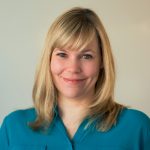Get In-depth Biotech Coverage with Timmerman Report.
8
Jan
2026
Following the Science to Immunology: Kate Haviland on The Long Run
Kate Haviland is today’s guest on The Long Run.
Kate is the former CEO of Cambridge, Mass.-based Blueprint Medicines.

Kate Haviland, fomer CEO, Blueprint Medicines
Blueprint was one of the big biotech success stories of 2025. The company was acquired by Sanofi for $9.1 billion in cash at closing, and potentially $9.5 billion if certain milestones are met.
The company started out with a vision for treating rare genetic forms of cancer. It found some success there, but that wasn’t the main reason Sanofi bought the company. Blueprint learned along the way that its drug for a rare type of gastrointestinal stromal tumors could also be used for a couple of related immune disorders – advanced systemic mastocytosis and indolent systemic mastocytosis.
The drug made a big difference for these patients. Once Blueprint realized it had the category to itself, it was off to the races.
You could say this is a story of following the science where it leads, strong execution in both R&D and sales and marketing functions, and a culture of teamwork that glued it all together for more than a decade.
Before we get started, a word from the sponsor of The Long Run.

Are you tired of inconsistent bioanalysis results and waiting months for data that should take days?
Dash is the only bioanalysis CRO built from the ground up with a tech-first approach, designed to deliver better, faster, and cheaper than anyone else.
With Dash, you get:
- Faster turnaround, with results in days, not months.
- High-quality data across major assay types including ELISA/MSD, LC-MS, and PCR, supporting all modalities and therapeutic areas
- Customer-first policies, like guaranteed outcomes and transparent pricing.
From preclinical to late-stage studies, Dash helps you move from assay development and validation to sample analysis with unmatched speed. Founded by industry veterans who’ve felt the pain of traditional CROs, Dash is the partner researchers and clinical leaders actually need: reliable, fast, and easy to work with.
So if slow bioanalysis CROs are costing you money and missed deadlines—put Dash to the test.
Visit www.dash.bio and see how fast bioanalysis can be.
Please enjoy this conversation with Kate Haviland on The Long Run.






































